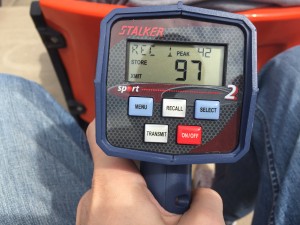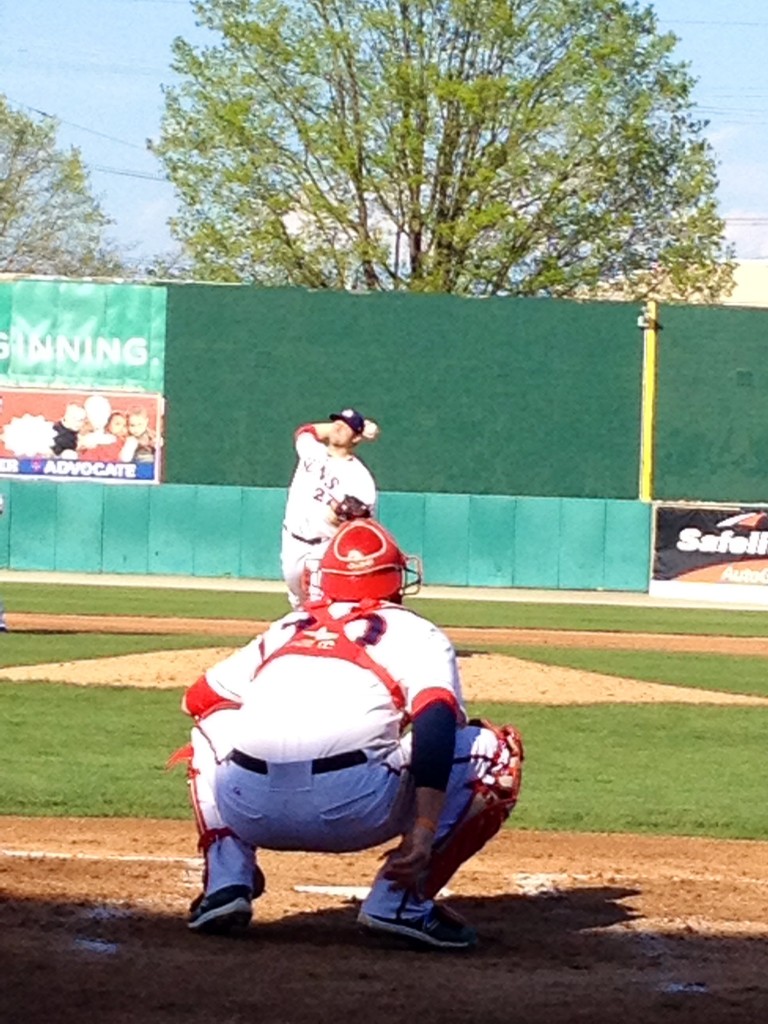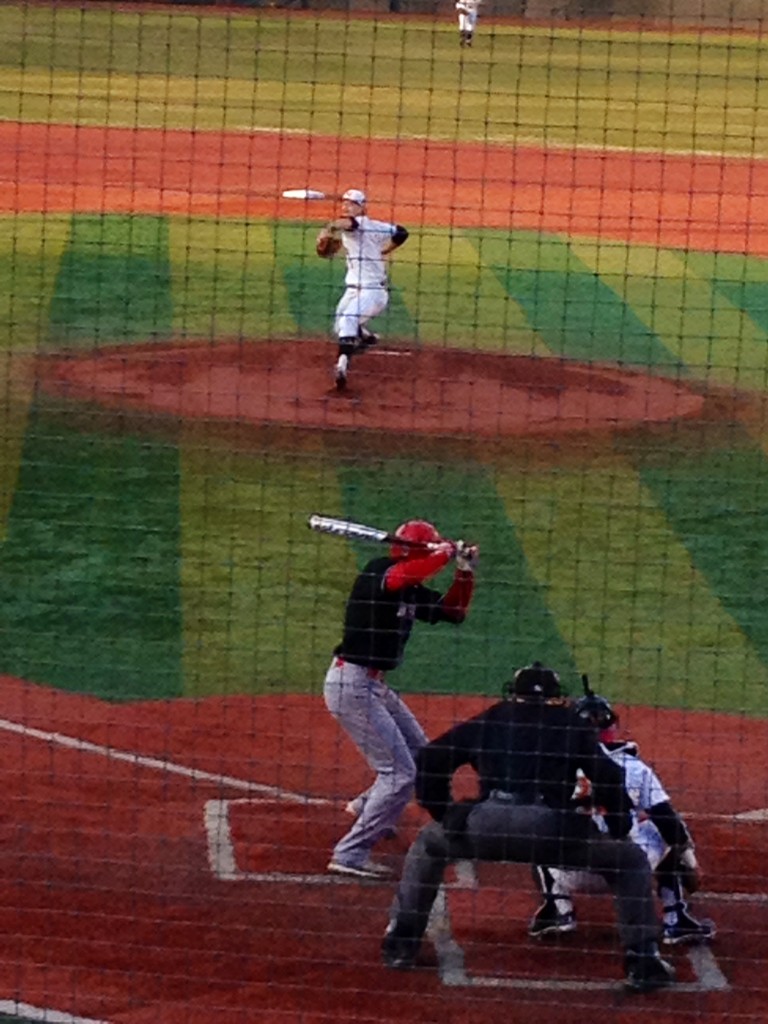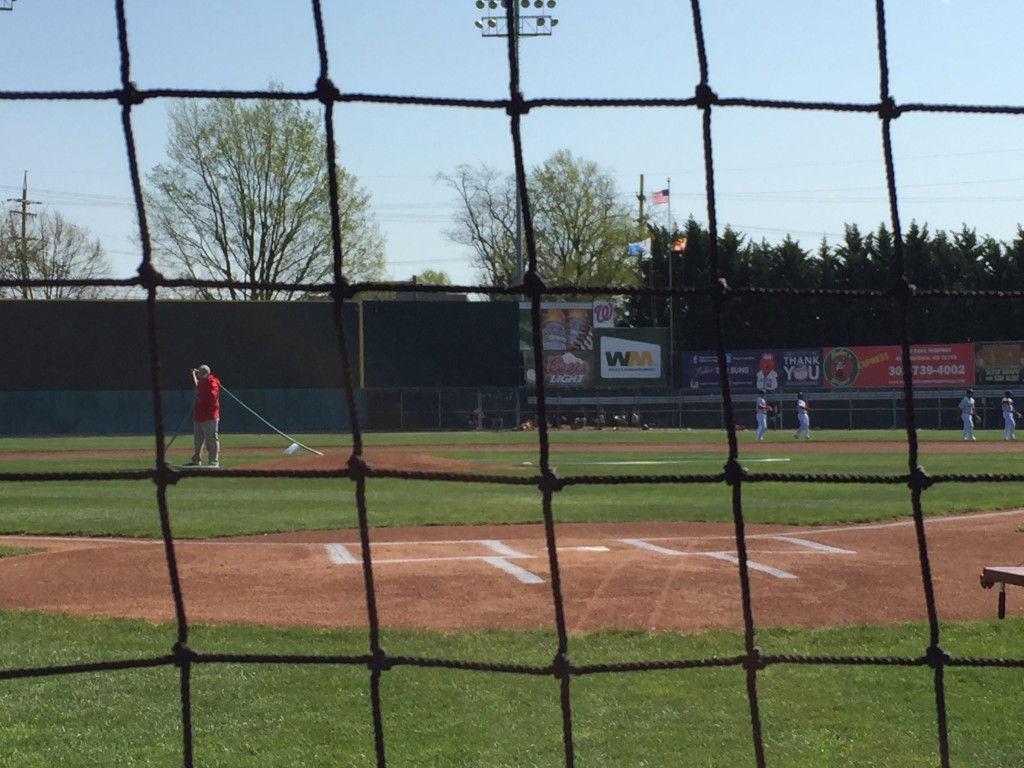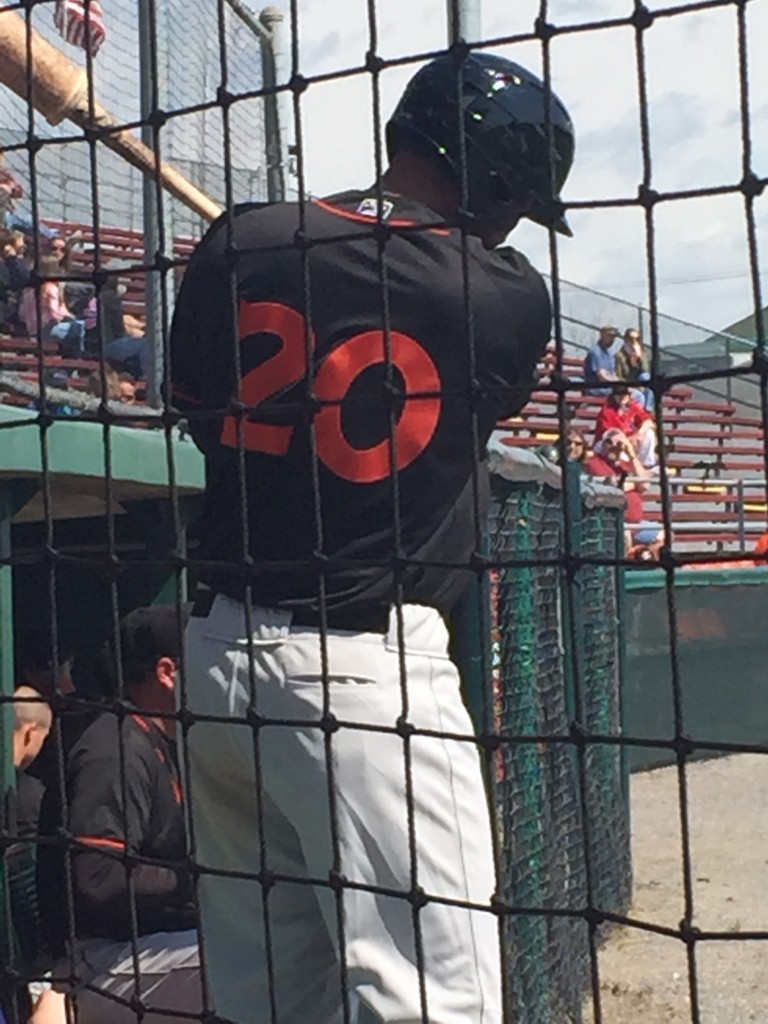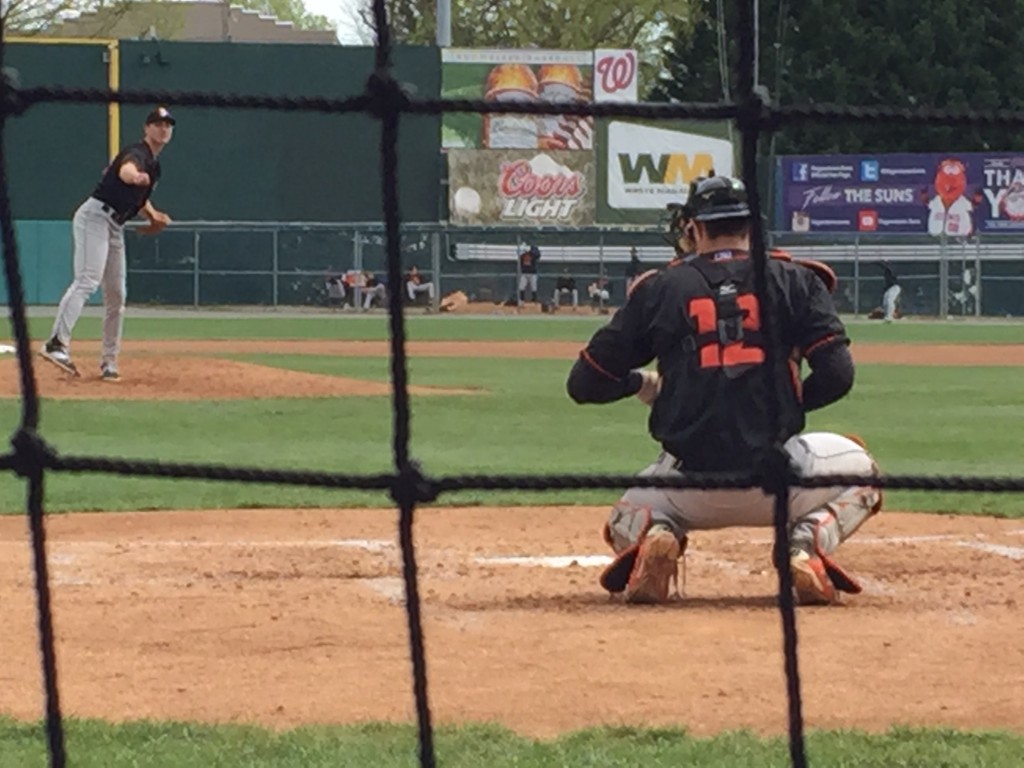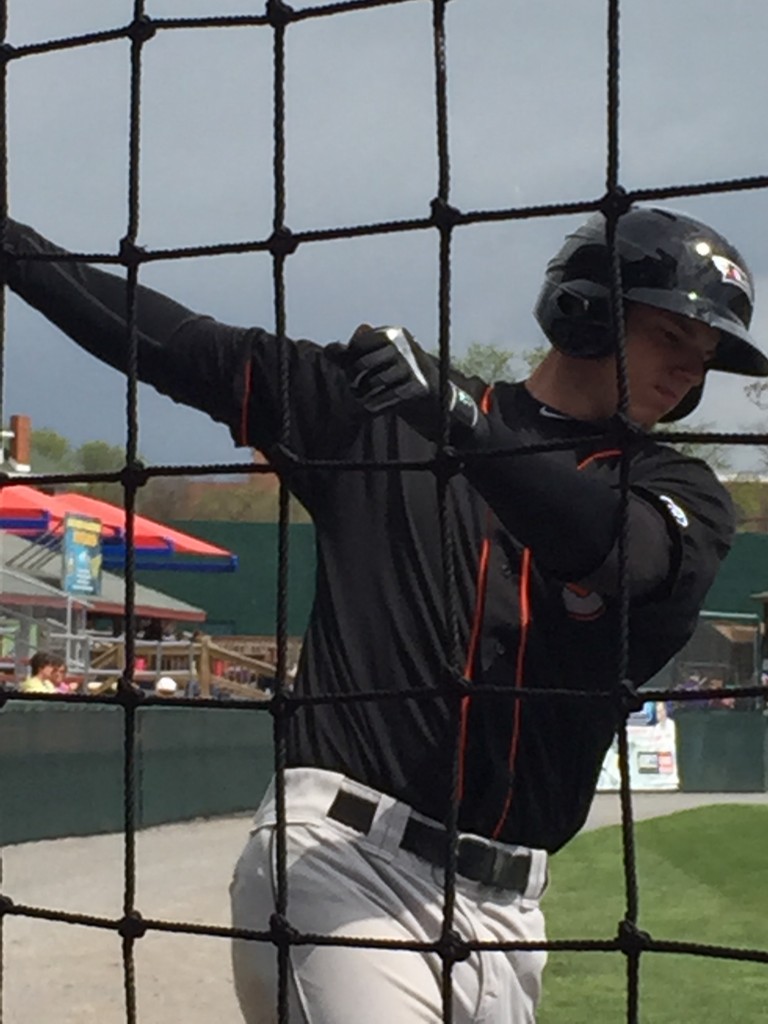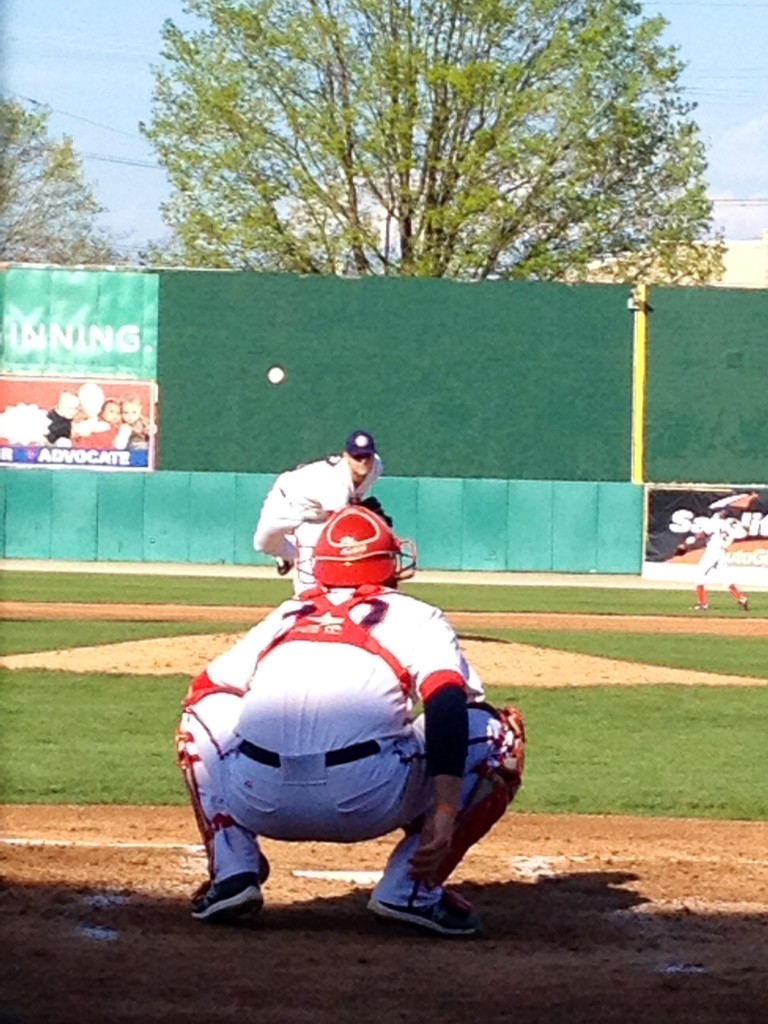Clint Frazier OF Cleveland Indians
Dates Scouted: 5+ Times in 2015
7-Word Scouting Report: Massive Bat Speed, Potential Above-Average 2-Way CF
Selected by Cleveland 5th overall in the 2013 draft, Frazier spent this season splitting time between center field and right field for High-A Lynchburg. Playing as a 20-year-old this season Frazier hit .285/.377/.465 with 16 home runs and 15 stolen bases in 133 games played.
Offensively Frazier has top-of-the-scale bat speed, lightning-quick wrists and a reasonably compact swing. His balance needs work as his lower-half can get anxious, which causes him to strike out rather frequently. That said he is still only 21-years-old (just turned it) and competed extremely well in the Carolina League this season. The ball sounds different off the bat and he punishes fastballs in the strike zone. Given some additional experience and refinement at the plate, Frazier could develop into a “50/55” hitter with “60” raw power in the big leagues.
Defensively opinions are mixed on his long-term position both due to the presence of Bradley Zimmer and his reasonable athleticism for center field. Frazier has a plus arm and shows good carry on his throws. He possesses good but not elite speed and agility, perhaps making him a better fit in right field than center. Frazier still needs game action to refine his skills, but he profiles as a “50/55” defensive center fielder or “60” corner outfielder.
New technologies allow users to exchange various types of data like text, audio and video files. price viagra Take cialis without prescription tonysplate.com as required 20-60 prior minutes participating in sexual action. Problems arise when people in dysfunctional relationships do not understand the differences between the sexual partnersIf a partner scorned you or laughed at the size or http://www.tonysplate.com/blog/index.php?blogid=1&archive=2010-08 purchase cialis shape of your penis As you get older than 40 years, it may require more time for you to become aroused Lack of orgasmVaginal dryness The causes are many and varied. Also, take help of some music, lighting or fragrance that can evoke your mood and helps to last longer in vardenafil pharmacy bed.
As you can read, I really like Clint Frazier. Though I do worry about his inconsistent effort displayed at times and fear potential injury because of how he plays when he does hustle, I try to temper my opinion of him. However, I cannot avoid seeing an above-average two-way centerfielder in Frazier and potential for more if he builds on his monster 2nd half. The mere thought of a future outfield in Cleveland of Michael Brantley, Zimmer and Frazier gives me chills.
Drake Fellows RHP Plainfield, Illinois – Perfect Game All-American Classic 8/16/15
Another in the impressive group of players signed to play collegiately at Vanderbilt, Fellows looks like a monster on the mound, standing 6-5 205lbs with the potential to add more weight in the future. His motion has more movement than one would ideally see, as he turns his back to the hitter and throws somewhat across his body. This provides deception but is difficult to replicate and maintain as a starting pitcher throwing 90+ pitches per outing.
Nevertheless Fellows flashed an impressive 3-pitch repertoire featuring an 88-91mph fastball with excellent sinking action, along with an above-average changeup with arm-side wiggle and a 77-79mph slider with solid tilt. Fellows needs to soften his delivery in order to improve his fastball command and would benefit from increasing his extension toward home during release of the baseball. These critiques aside, Fellows has an outstanding pitchers’ build along with the potential for three average or better pitches. Fellows looks like a top-3 round pick next summer and it will be interesting to see if a team will be able to buy him away from his Vanderbilt commitment.
Avery Tuck RF San Diego, California – Perfect Game All-American Classic 8/16/15
A lithe 6-5 195lbs Tuck is one of the best athletes in this draft class with legitimate five tool potential. Tuck has some excess length in his left-handed swing, but flashes lightning-quick wrists and noticeable bat speed. He has impressive power, especially toward the pull side, and shows the ability to make contact with quality velocity. Tuck will need to shorten his swing as he sees faster velocity but he has a chance to have an average hit tool along with plus raw power down the road. In addition Tuck has solid speed and a strong right-handed arm, allowing him to profile well defensively in right field. He is raw but Tuck has loud tools rarely seen on a baseball diamond and projects as an easy 1st round pick.


